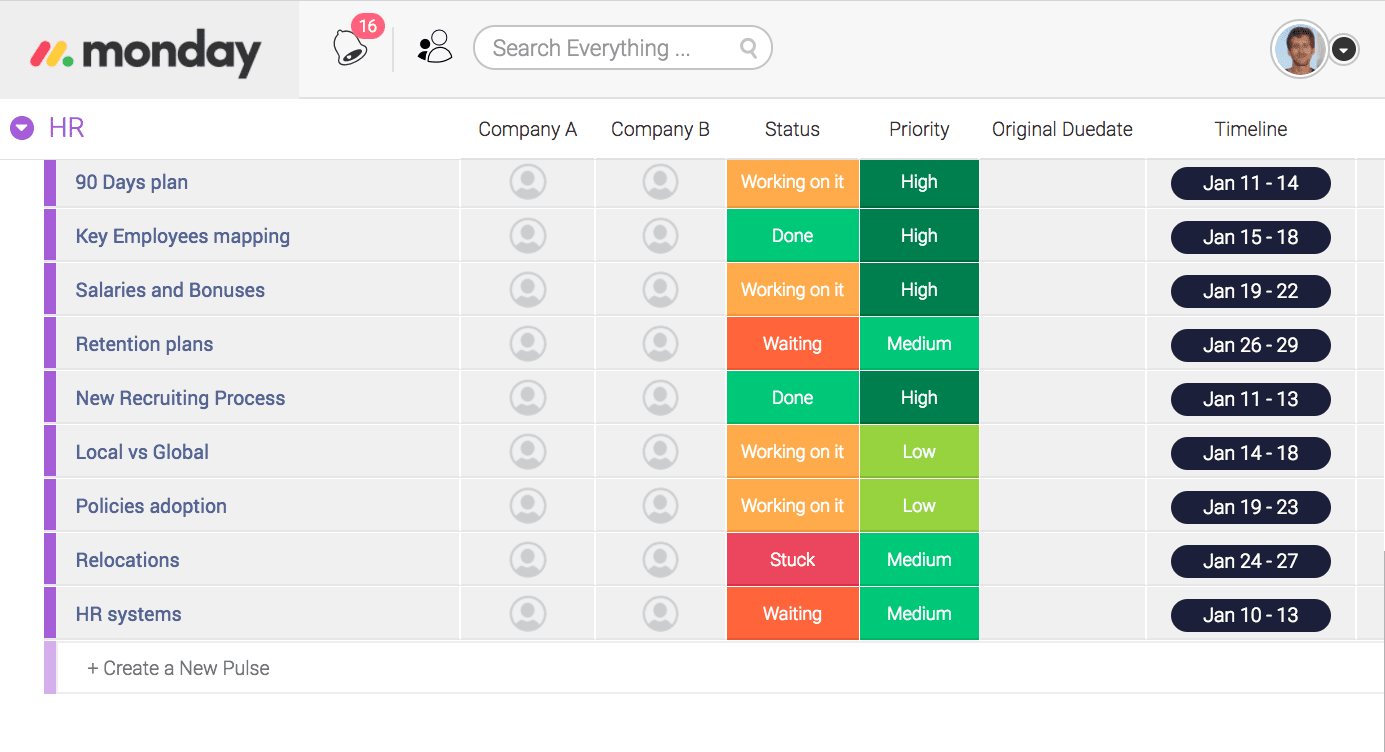

Post Merger Integration Plan
Running a post merger integration process in a painless, easy and visual way
We all know that part of building a strong and long-lasting company one must grow organically but also look at corporate development opportunities. The latter being a critical growth component with unfortunately very high failure rates.
A lot of thought and diligence process is put into selecting the right targets, building the relationship, the internal process to get the deal approved and then negotiating the deal terms and driving a successful conclusion to the acquisition process.
Now, once everybody is exhausted from working with the lawyers, the bankers, the internal opposition and sometimes against competition … the real critical factor for the success of the acquisition starts – the post-merger integration process.
At this stage all the assumptions and high-hopes meet the cultural differences, the real-world challenges and all the surprises bubble up. This is the defining moment for the faith of the acquisition – research shows that the critical success factor is that the difficult decisions are made with transparency thus getting both teams on-board – becoming one with one aligned goal.
Running a Post-merger integration process involves people who have just recently been notified of the acquisition and might be threatened by it. Teams that take part in the PMI process are from across both organizations and many departments like Sales, Marketing, R&D, Projects, IT, HR, Operations, Finance and Legal:


Many of the topics are intermingled and require easy sharing of the discussions and outcomes for example:
Projects, Sales and R&D – which projects are on-going, which of the sales teams take the lead on the account going forward and what is the future of the products\features that have been sold to this account.
Marketing & Communication and HR – what is going to be the organizational and reporting structure, how functions are merged – who leads what – and how all this is communicated to internal teams as well as partners and customers.
IT and Sales, HR – which IT systems are the going forward systems, how is the transition going to work, how data is migrated and what new capabilities are enabled for the combined entity.
The job of the PMI manager is coordinating the whole process across ~40-50 participants. It is a very difficult task, keeping to the timeline, identifying bottlenecks and even just collecting status can slow down the process. The most important task is identifying teams who start to derail – when sometimes personal issues gets priority over the benefit of the company – this is the key for solving the issues when they are still small and don’t have lingering effects on the outcome of the acquisition. Being able to filter across different teams and tasks helps the PMI manager be on top of the task:

Across the different PMI tracks for each task there are two leads one from the acquiring and one from the acquired company. The status can range from Open to Done but more importantly it can be waiting on someone else or just plain stuck – these are the areas the PMI manager needs to focus on.
Meeting deadline across a dozen team that have not worked together before tackling topics that are core to their existence and success must have everybody accountable and be able to identify bottlenecks early on:

Using the right tool can help both organizations sail through the PMI storm, make sure right team resourcing and priorities are met, maintaining on-going governance and open and transparent communication leading to a common vision and execution.






